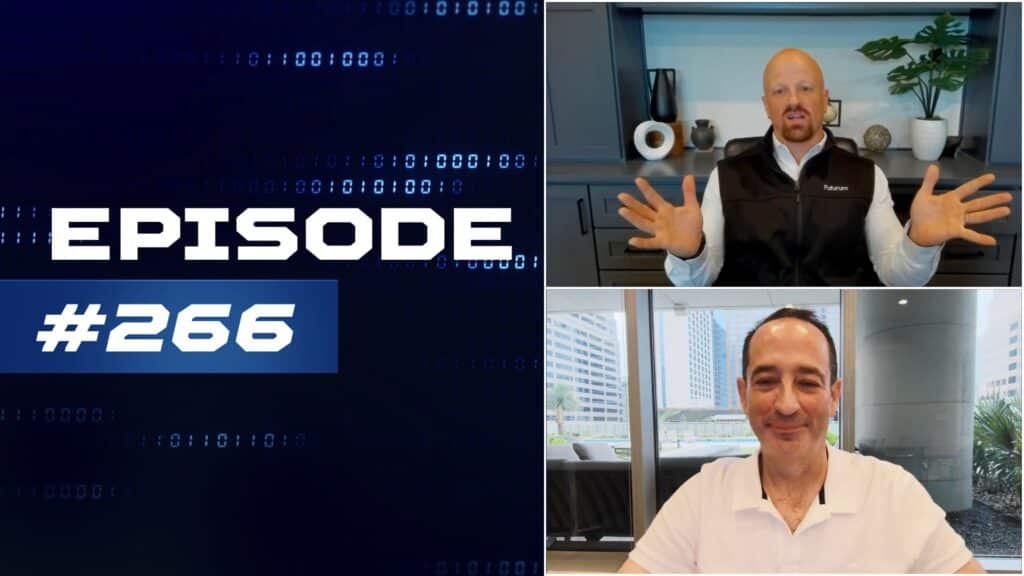Analyst(s): Krista Case
Publication Date: December 4, 2024
The Futurum Group’s latest research report, Cloud, Complexity, AI: The Triple Threat Demanding New Cyber Resilience Strategies, completed in partnership with NetApp, delves into pain points, technical approaches, and priorities when it comes to cyber-resiliency. To do so, we surveyed more than 1,300 cybersecurity decision-makers. Respondents held C-Level, VP, and Director-level titles within IT and Security across a variety of industries, globally. We also conducted 15 one-on-one interviews to know more about evolving challenges and priorities.
What is Covered in this Article:
- The Evolving Threat Landscape: Cyberattacks are becoming increasingly sophisticated, driven by AI and targeting complex IT environments. Organizations face significant challenges in protecting their data and ensuring business continuity.
- The Importance of Data Classification and Protection: Effectively classifying and protecting critical data is essential for mitigating risks and enabling rapid recovery from cyberattacks. AI-powered solutions can help automate these processes and improve detection capabilities.
- Simplifying the Security Stack: The proliferation of security tools can lead to complexity and inefficiency. Consolidating functionalities and adopting a more integrated approach can streamline security operations and enhance overall cyber resilience.
The Perfect Storm: Rising Threats and Complex IT Environments
The cybersecurity landscape is evolving rapidly, driven by increasing sophistication of cyberattacks and the growing complexity of IT environments. Moreover, no organization is immune. More than half of respondents we surveyed indicated that their organization has experienced an attack in the last 12-18 months.
It is really no surprise. The rise of AI-powered attacks and the increasing sophistication of cybercriminals pose significant risks to organizations. At the same time, multi-cloud environments and the proliferation of devices and applications expand the attack surface, making it difficult to maintain visibility and control. This evolving threat landscape was most commonly noted by nearly half of respondents in our study as having the most material impact on organizations’ cyber-resiliency.
One thing is clear – the intersection point of the growing threat of cyberattacks and the expanding potential attack surface are creating unprecedented challenges in protecting data and ensuring business continuity. Of the respondents we surveyed that indicated having experienced an attack, one in five were unable to recover data, and more than half were unable to prioritize their recovery operations based on the importance of their data – at least not easily. Simply put, classifying data in an intelligent manner that is based on the data’s sensitivity and criticality is essential for effective protection across multi-hybrid cloud environments.
Proactive Defense: AI-Powered Threat Detection
Another area that intelligent data services can help is the ability to keep pace with continually changing and more sophisticated attack vectors. Specifically, this entails AI-based attack detection technologies – which in fact topped the list of tools in use for cyber-resiliency today and the top investment area in the future in our study.
Today, many such tools focus on using AI to uncover anomalous and potentially malicious behavior in the protection environment. While this is important because attackers are targeting backups in order to inhibit the ability to recover, this approach means that attacks are only being caught after they have already permeated and infected the environment. Applying attack detection to the production environment becomes critical because it helps to detect attacks sooner, thus limiting their spread and impact while also facilitating a quicker ability to react and recover.
The Need for a Unified Security Approach
Last but far from least to note is the fact that cybersecurity toolchains have become more vast and complex than ever before. The cybersecurity industry has long held a preference for niche, best-of-breed tools, and in today’s world, this is resulting in operational complexities that slow time-to-detection and recovery. In our study, nearly three-quarters of respondents indicated that their organization is using more than 40 tools for cybersecurity, and more than 80% indicated that this vast number of tools is a problem when it comes to cyber-resiliency.
The ability to consolidate functionalities into fewer tools becomes necessary. Given that it is the data that attackers are after, increasingly it makes sense to consolidate some capabilities via a unified primary storage layer, and to facilitate the ability for this storage layer to connect into other cybersecurity tools such as SIEM, SOAR, and XDR platforms to facilitate a more global vantage point into vulnerabilities and cybersecurity incidents, as well as a faster ability to respond.
Conclusion
In sum, an intelligent approach to data services such as classification and threat detection, coupled with a more unified and integrated approach to data storage and the broader cybersecurity toolchain, is necessary to addressing organizations’ top cyber-resiliency challenges. These include adapting to more sophisticated and fast-moving cyber-threats, a more siloed and expansive potential threat landscape, and the need to minimize data loss and downtime of critical business services by reacting as quickly as possible.
For additional insights, read the research report: Cloud, Complexity, AI: The Triple Threat Demanding New Cyber Resilience Strategies.
Disclosure: The Futurum Group is a research and advisory firm that engages or has engaged in research, analysis, and advisory services with many technology companies, including those mentioned in this article. The author does not hold any equity positions with any company mentioned in this article.
Analysis and opinions expressed herein are specific to the analyst individually and data and other information that might have been provided for validation, not those of The Futurum Group as a whole.
Other insights from The Futurum Group:
NetApp INSIGHT: Driving Innovation for Customer Success
Author Information
Krista Case is Research Director, Cybersecurity & Resilience at The Futurum Group. She brings approximately 15 years of experience providing research and advisory services and creating thought leadership content. Her vantage point spans technology and vendor portfolio developments; customer buying behavior trends; and vendor ecosystems, go-to-market positioning, and business models. Her work has appeared in major publications including eWeek, TechTarget and The Register.
Prior to joining The Futurum Group, Krista led the data protection practice for Evaluator Group and the data center practice of analyst firm Technology Business Research. She also created articles, product analyses, and blogs on all things storage and data protection and management for analyst firm Storage Switzerland and led market intelligence initiatives for media company TechTarget.





